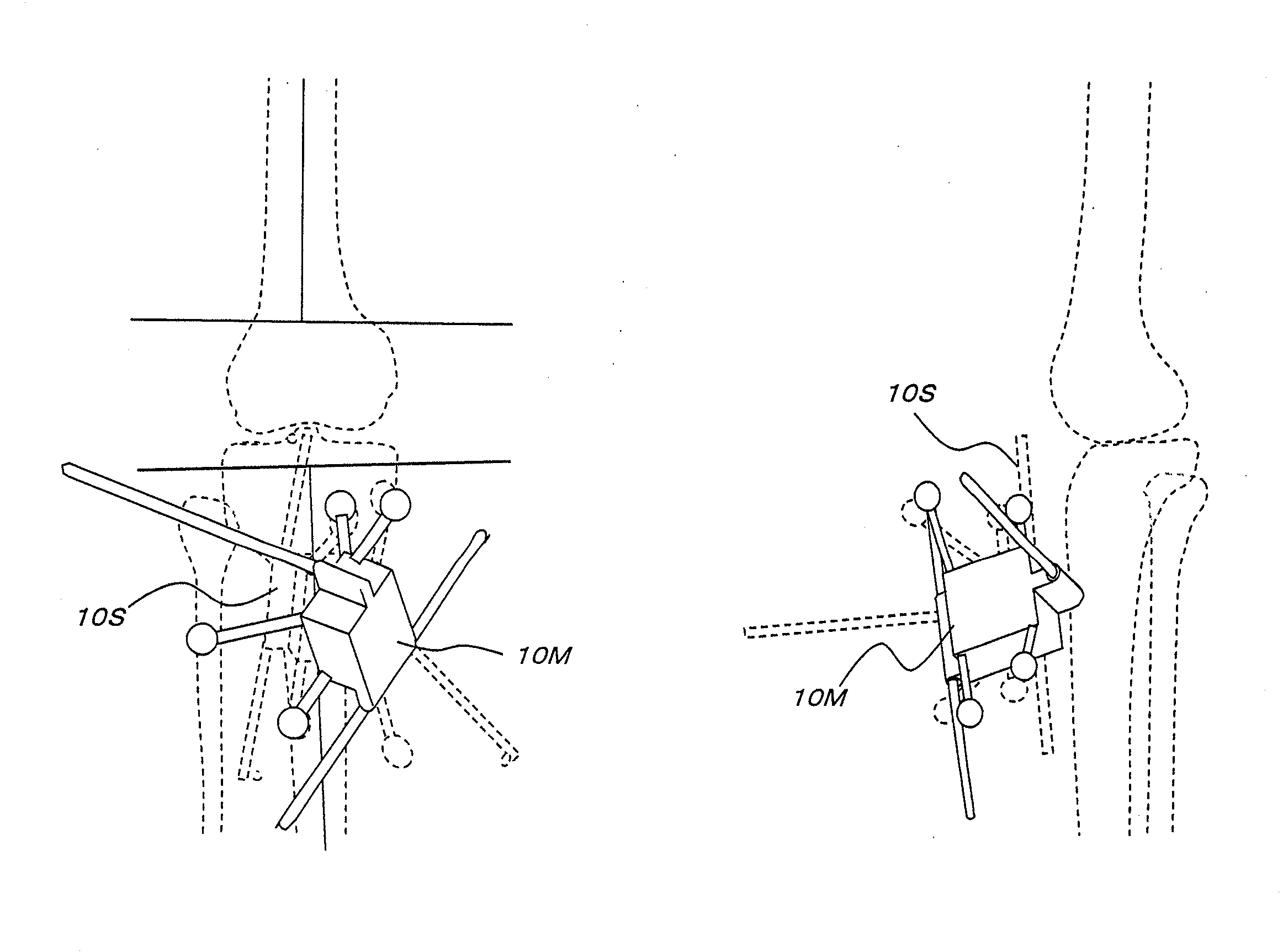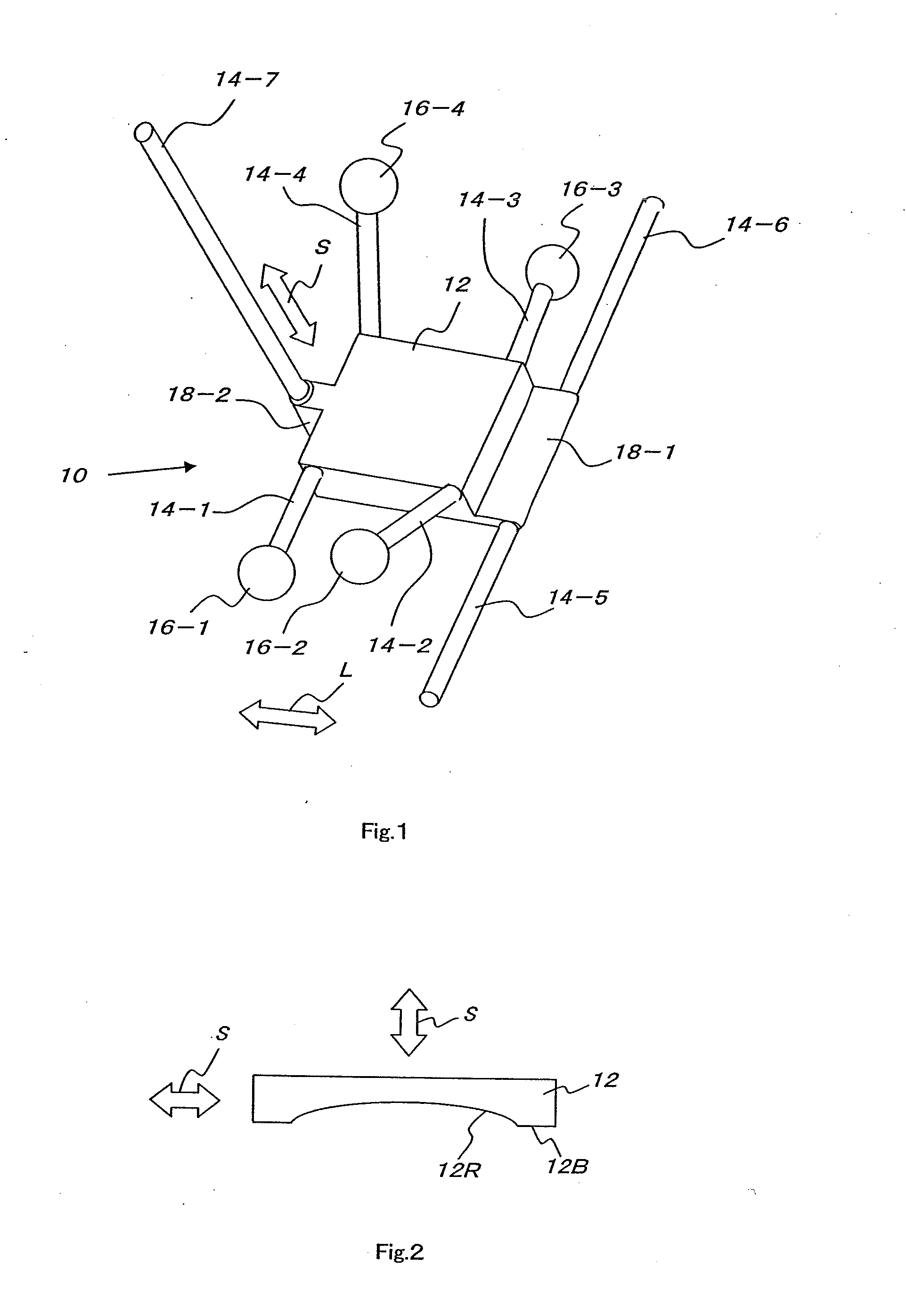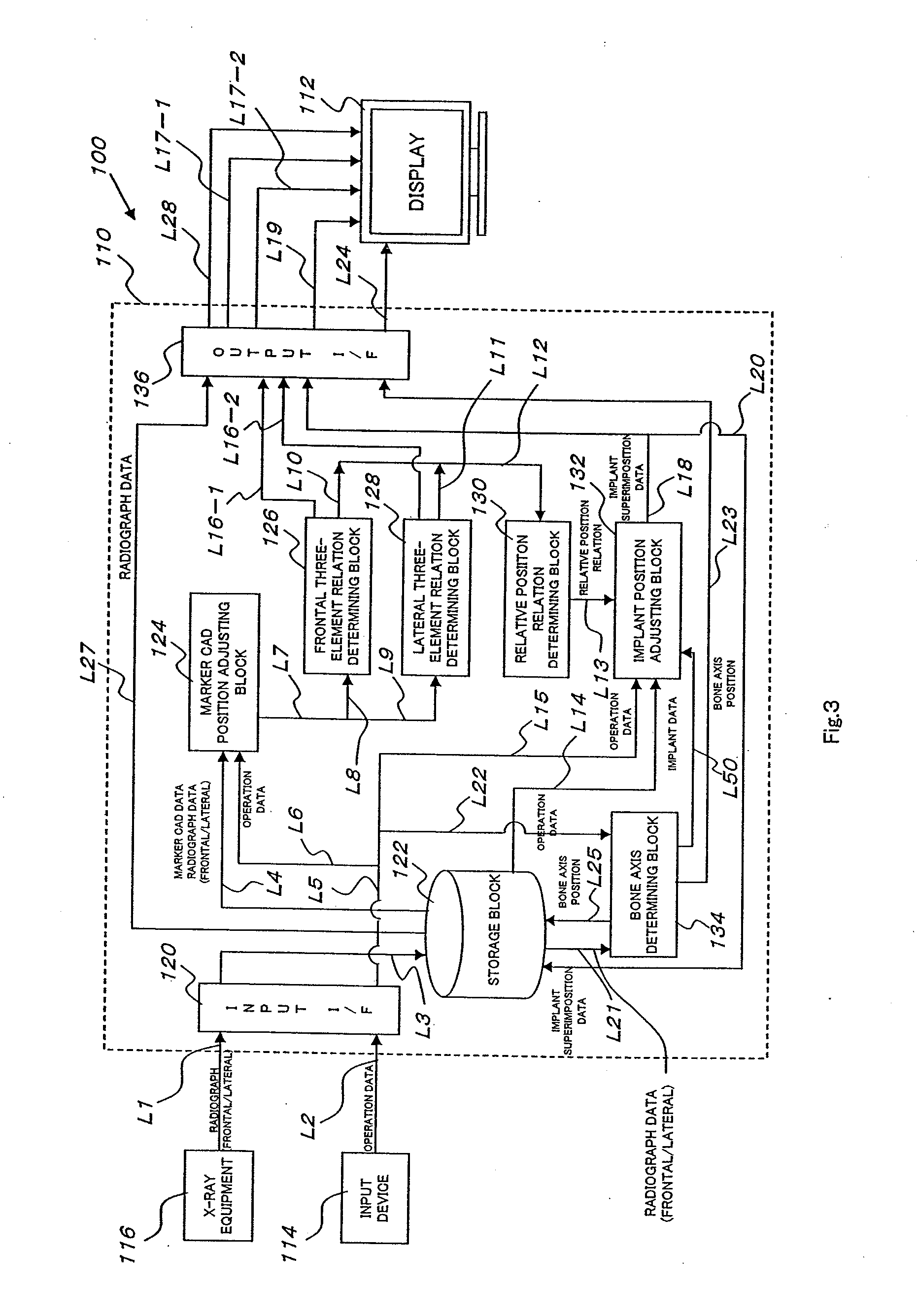Artificial joint replacement assisting device, artificial joint replacement assisting method using same, and assisting system
a technology of artificial joint replacement and assisting device, which is applied in the direction of osteosynthesis device, prosthesis, instruments, etc., can solve the problems of inability to correct magnification ratio or reduction ratio, inability to take radiographs, inaccurate position of bone resection plane determined by conventional templating, etc., and achieve accurate determination and adequate implant position. , the effect of accurate determination
- Summary
- Abstract
- Description
- Claims
- Application Information
AI Technical Summary
Benefits of technology
Problems solved by technology
Method used
Image
Examples
first embodiment
[0102]First, referring to FIGS. 3 to 13, the assisting method for artificial joint replacement and assisting system for artificial joint replacement are described below.
[0103]FIG. 3 is a bloc diagram of the assisting system for artificial joint replacement.
[0104]In FIG. 3, the assisting system for artificial joint replacement, the whole of which is designated by reference numeral 100, is mainly comprised of: a system main unit 110 composed of a computer; a display 112 as a display unit; input means 114 composed of a keyboard and a mouse or the like; and X-ray equipment 116 as a system for taking radiographs.
[0105]The system main unit 110 includes an input interface 120, a storage block 122 as a database, a marker CAD position adjusting block 124, a frontal three-element relation determining block 126 and a lateral three-element relation determining block 128, a relative position relation determining block 130, an implant position adjusting block 132, a bone axis determining block 1...
second embodiment
[0196]Next, referring to FIGS. 14 to 19, the assisting method for artificial joint replacement and assisting system for artificial joint replacement will be described.
[0197]In the first embodiment shown in FIGS. 3 to 13, it is difficult to accurately adjust the position of the implant around the bone axis (position in the direction indicated by arrow R in FIG. 19 (c)), the position of so-called the rotation of the implant.
[0198]The second embodiment shown in FIGS. 14 to 19 is designed so that the implant position relating to such “rotation” can be adjusted adequately.
[0199]FIG. 14 shows the system configuration according to the second embodiment.
[0200]Referring to FIG. 14, points which are different from the first embodiment shown in FIG. 3 are explained below.
[0201]In FIG. 14, the system according to the second embodiment, the whole of which is designated by reference numeral 200, includes a system main unit 210 composed of a computer, a display 112, an input device 114, and X-ray ...
PUM
 Login to View More
Login to View More Abstract
Description
Claims
Application Information
 Login to View More
Login to View More - R&D
- Intellectual Property
- Life Sciences
- Materials
- Tech Scout
- Unparalleled Data Quality
- Higher Quality Content
- 60% Fewer Hallucinations
Browse by: Latest US Patents, China's latest patents, Technical Efficacy Thesaurus, Application Domain, Technology Topic, Popular Technical Reports.
© 2025 PatSnap. All rights reserved.Legal|Privacy policy|Modern Slavery Act Transparency Statement|Sitemap|About US| Contact US: help@patsnap.com



